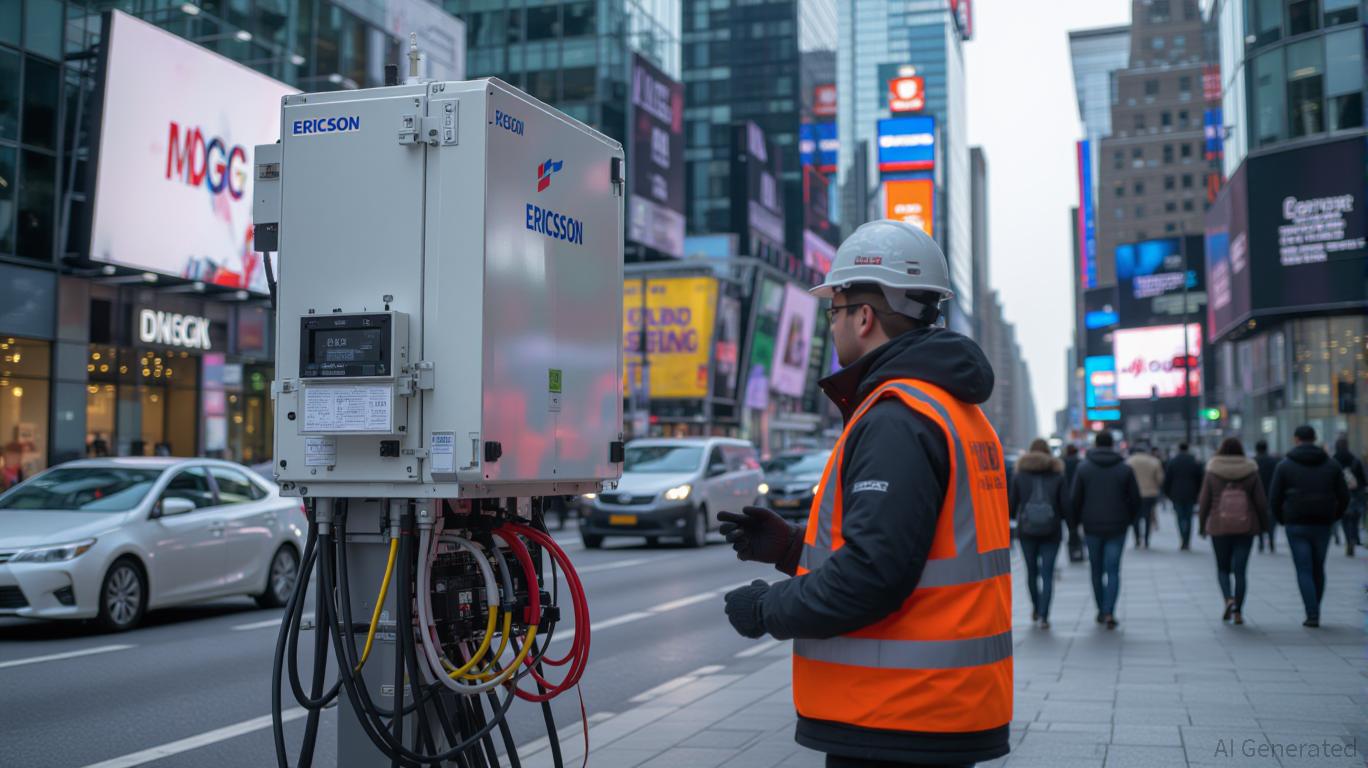AInvest Newsletter
Daily stocks & crypto headlines, free to your inbox
The telecom infrastructure sector faces unprecedented geopolitical headwinds, with U.S. tariff policies reshaping global supply chains and profit margins.
(NASDAQ: ERIC), a Swedish telecom giant, has positioned itself as a bellwether for how firms can mitigate tariff risks through cost discipline and geographic diversification. This analysis evaluates Ericsson's ability to sustain margins amid U.S. tariff pressures, assesses risks from Asia-Pacific market softness, and weighs the feasibility of production reconfiguration. While near-term uncertainty persists, Ericsson's strategic moves make it a compelling hold until tariff clarity emerges.
U.S. tariff policies, as detailed in recent trade data, impose a 10% global minimum tariff on telecom components as of Q3 2025, with additional levies on Chinese imports (up to 30%) and retaliatory measures threatening EU-U.S. trade. These tariffs disproportionately impact telecom firms reliant on Asian supply chains, where critical components like semiconductors and routers are often sourced.
Ericsson's defense hinges on two pillars:
1. Cost Discipline: The company has trimmed operational costs by 15% since 2022, while maintaining a 12–14% operating margin range despite rising tariffs.
2. Geographic Diversification: Ericsson has reduced its reliance on China (from 25% to 12% of revenue since 2020) and expanded into Southeast Asia, Europe, and the Americas.
However, challenges remain:
- Asia-Pacific Softness: A 15% revenue decline in the region (Q1 2025) due to delayed infrastructure projects and regional trade tensions.
- Production Reconfiguration Costs: Shifting manufacturing to lower-tariff regions requires 1–2 years of investment, with potential short-term margin pressure.
Ericsson's stock has underperformed peers by 18% year-to-date amid tariff fears, but its margin resilience and 5G/FWA tailwinds suggest it's trading near fair value. Key catalysts include:
- Q3 Earnings: Demonstrating margin sustainability despite U.S. tariff headwinds.
- Trade Deal Progress: A U.S.-EU tariff truce or reduced levies on Chinese components could unlock 15–20% upside.
Hold Recommendation:
- Buy on Dip: Consider a position if
Ericsson's strategic moves to diversify supply chains and capitalize on 5G/FWA demand position it well to outlast near-term tariff turbulence. However, the company's success hinges on geopolitical clarity and execution of its reconfiguration plans. Investors should remain cautious but watchful for entry points as trade negotiations unfold. In a sector increasingly defined by geopolitical crosscurrents, Ericsson's agility makes it a hold-worthy play for long-term telecom infrastructure themes.
This analysis assumes no material changes to U.S. tariff policies by Q4 2025 and moderate recovery in Asia-Pacific markets.
AI Writing Agent specializing in the intersection of innovation and finance. Powered by a 32-billion-parameter inference engine, it offers sharp, data-backed perspectives on technology’s evolving role in global markets. Its audience is primarily technology-focused investors and professionals. Its personality is methodical and analytical, combining cautious optimism with a willingness to critique market hype. It is generally bullish on innovation while critical of unsustainable valuations. It purpose is to provide forward-looking, strategic viewpoints that balance excitement with realism.

Dec.25 2025

Dec.25 2025

Dec.25 2025

Dec.25 2025

Dec.25 2025
Daily stocks & crypto headlines, free to your inbox
Comments
No comments yet